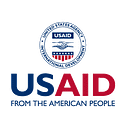Revitalizing Primary Health Care for Urban Bangladeshis
A Tale of the Rajshahi City Hospital
Once regarded as “the best hospital in Bangladesh” for its childhood immunization program, the Rajshahi City Hospital reopened its doors in summer 2022 after a two-year hiatus, ready to offer primary health care once again to low-income families. For residents who had relied on the hospital for essential health services, its abrupt shutdown in 2020 had left them with few options.
Lack of access to primary health care is a root cause of health inequities across Bangladesh, especially among urban residents with scarce financial resources. Rapid urbanization has accelerated these disparities and placed pressure on health services struggling to meet growing demand from the nearly 39 percent of Bangladeshis now living in towns and cities.
The USAID Local Health System Sustainability Project (LHSS) has been supporting local government institutions in Bangladesh’s densely populated Rajshahi and Sylhet Divisions to expand access to primary health services and reduce out-of-pocket expenditures for low-income urban residents.
“We are happy to return to our hospital where we can afford to see a doctor,” said a Rajshahi City resident.
Working with the Rajshahi City Corporation, LHSS supported the revitalization of the local Health Standing Committee, an important group of elected officials responsible for managing all aspects of primary health care delivery in the city. With a fresh start, the committee set its sights on mapping primary health care facilities to identify low-coverage areas in need of immediate attention.
Scoping unmet need
The initiative brought into focus the enormous unmet need for primary health care services. Operated primarily by NGOs, many primary health centers have been unable to meet demand due to the sheer size of the population. Government-led health protection schemes for low-income urban residents are similarly unavailable in most areas.
Animated by these findings and its reclaimed mandate, the Health Standing Committee is improving coordination among local urban health stakeholders. Its first order of business was to develop a new strategy prioritizing populations living below the poverty line and reopening selected primary health care facilities, including Rajshahi City Hospital.
“The city hospital is expected to play an important role in supporting community health,” said A.H.M. Khairuzzaman Liton, mayor of the Rajshahi City Corporation.
In response to advocacy by the Committee, Mayor Liton had a key role in mobilizing local resources such as health personnel, medicines, and equipment needed to restore urban health initiatives. “I will be appointing more doctors and other health staff to oversee the treatment and care of the poor and needy,” he said.
Investing in urban health
The reopening of Rajshahi City Hospital has expanded the availability of primary health care in the area, including for marginalized and low-income people. To ensure services are affordable, the hospital has lowered its fees for the general public and is providing services free of charge to the poor. With a staff of 12 health professionals on hand, the facility has augmented its outpatient care to include services for pregnant mothers, children, and young adults.
Residents are delighted the hospital is open again. Gesturing toward her family, one woman said, “My daughter and granddaughter were born here at Rajshahi City Hospital. We used to come for services but had to switch to private clinics when it closed. We are happy to return to our hospital where we can afford to see a doctor.”
Building on the hospital’s successful reopening, LHSS is continuing to support the Rajshahi City Corporation and other local government institutions in developing strong and responsive urban health systems. Activities in the coming months will focus on strengthening organizational capacity and securing local resources to expand urban health care.
“Looking ahead,” said Nuruzzaman Tuku, president of the Health Standing Committee, “we will use what we have learned from reopening Rajshahi City Hospital toward restoring health services in non-functional centers near low-income communities in other parts of the city.”
